The base function all.vars does this:
〉all.vars(expr1)
[1] "d" "a" "b"
Alternatively, you can use all.names to get all names in the expression rather than just those that aren’t used as calls or operators:
〉all.names(expr1)
[1] "{" "<-" "d" "+" "a" "b"
Don’t be misled: this result is correct! All of these appear in the expression, not just a, b and d.
But it may not be what you want.
In fact, I’m assuming what you want corresponds to the leaf tokens in the abstract syntax tree (AST) — in other words, everything except function calls (and operators, which are also function calls).
The syntax tree for your expression looks as follows:1
{
|
<-
/\
d +
/ \
a b
Getting this information means walking the AST:
leaf_nodes = function (expr) {
if(is.call(expr)) {
unlist(lapply(as.list(expr)[-1L], leaf_nodes))
} else {
as.character(expr)
}
}
〉leaf_nodes(expr1)
[1] "d" "a" "b"
Thanks to the AST representation we can also find inputs and outputs:
is_assignment = function (expr) {
is.call(expr) && as.character(expr[[1L]]) %in% c('=', '<-', '<<-', 'assign')
}
vars_in_assign = function (expr) {
if (is.call(expr) && identical(expr[[1L]], quote(`{`))) {
vars_in_assign(expr[[2L]])
} else if (is_assignment(expr)) {
list(created = all.vars(expr[[2L]]), required = all.vars(expr[[3L]]))
} else {
stop('Expression is not an assignment')
}
}
〉vars_in_assign(expr1)
$created
[1] "d"
$required
[1] "a" "b"
Note that this function does not handle complex assignments (i.e. stuff like d[x] <- a + b or f(d) <- a + b very well.
1 lobstr::ast shows the syntax tree differently, namely as
█─`{`
└─█─`<-`
├─d
└─█─`+`
├─a
└─b
… but the above representation is more conventional outside R, and I find it more intuitive.
